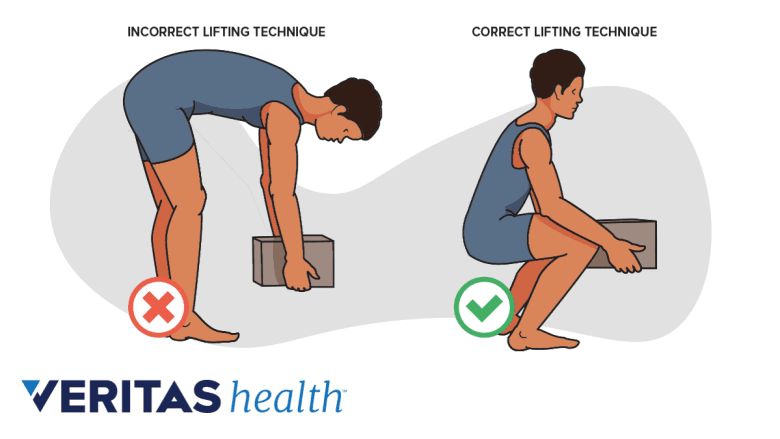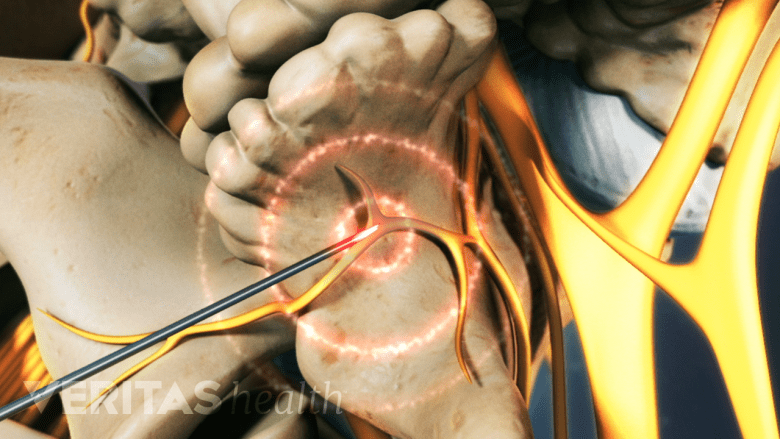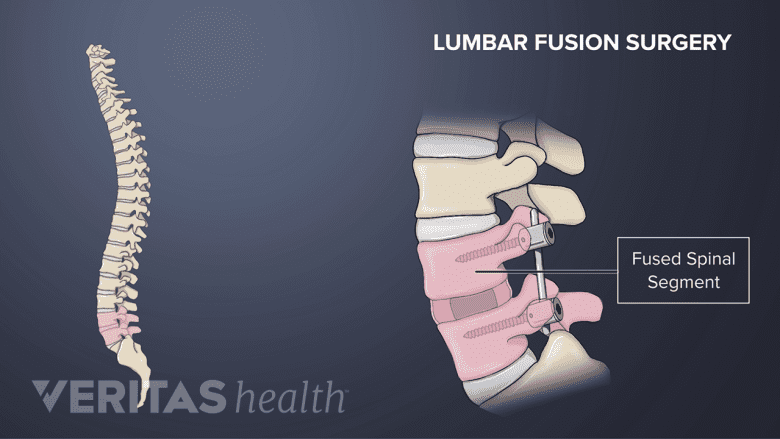Treatment of the L4-L5 spinal motion segment typically begins with nonsurgical methods. In cases where the back and/or leg symptoms do not improve with nonsurgical treatments, or in case of certain medical emergencies, surgery may be considered.
In This Article:
Nonsurgical Treatments for L4-L5
Nonsurgical treatments of the L4-L5 motion segment include:
Medication
Both prescription and over-the-counter (OTC) medications are used to help relieve pain from L4-L5. Typically, non-steroidal anti-inflammatory drugs (NSAIDs) are usually tried first. For more severe pain, opioids, tramadol, and/or corticosteroids may be used.
Physical therapy
Exercise and physical therapy can be modified to specifically target pain stemming from L4-L5 and the lower back. These therapies help stabilize the back and keep the muscles and joints well-conditioned—providing long-term relief.
See Physical Therapy for Low Back Pain Relief
Chiropractic manipulation

Chiropractic adjustments may help relieve lumbar pain.
Chiropractic adjustment of the lumbar spine may help relieve pain stemming from the L4-L5 motion segment.
Self-care

Using a supported posture while bending and lifting helps protect the spinal structures.
To promote healing and/or prevent an L4-L5 injury from becoming worse, a few tips include avoiding:
- Repeated bending of the spine
- Sudden, abrupt movements, such as jumping
- High-intensity exercise and lifting heavy weights
It is important to use correct posture while standing, sitting, walking, lying down, and lifting items off the floor to maintain a normal spinal curvature and minimize stresses on the spine.
Additionally, staying active, following an exercise-routine, quitting smoking, and reducing weight in overweight individuals can help lower the risk of problems stemming from L4-L5.
Injection Treatments for L4-L5
Different types of injection treatments can help reduce inflammation and/or stop the L4-L5 pain impulses from reaching the brain.
Lumbar epidural steroid injections
Steroids injected directly into the spinal epidural space can help decrease inflammation and reduce the sensitivity of nerve fibers to pain, generating fewer pain signals. These injections are more effective in treating the inflammatory causes of pain, such as pain from herniated disc fragments, and are typically less effective for compressive causes of pain.
See Lumbar Epidural Steroid Injections for Low Back Pain and Sciatica
Radiofrequency ablation

Targeted application of heat to a nerve can be used to interrupt its pain pathway.
Radiofrequency ablation may be used to treat pain stemming from the L4-L5 vertebral facet joints. A part of the pain-transmitting nerve is heated with a radiofrequency needle to create a heat lesion. This resulting lesion prevents the nerve from sending pain signals to the brain.
While performing injection treatments, fluoroscopic (x-ray) guidance with radiopaque contrast dye is usually used for correct needle placement. Fluoroscopic guidance helps improve the diagnostic accuracy and decreases procedural risks.
Injections may also be used diagnostically as a selective nerve block to confirm the nerve root as the cause of the leg pain and is typically helpful prior to surgery.
Injection treatments are usually considered after nonsurgical methods are tried for several weeks with no pain relief. These injections may carry a small risk of bleeding and/or nerve damage in the lumbar region.
Surgical Treatments for L4-L5

The L4 and L5 vertebrae may be fused together to give stability to the lumbar spine.
Surgery may be considered when the neurological deficits, such as numbness and/or weakness continue to worsen despite several weeks of nonsurgical treatments. For a successful surgical outcome, a structural condition that is known to be responsive to surgical treatment must be present. Surgery may also be advised in cases of tumors or infections.
Lumbar spine surgeries to relieve compression of a nerve root and/or the cauda equina are usually performed using minimally invasive techniques and include:
- Microdiscectomy. In this surgery, a small part of the disc material near the nerve root is taken out. A portion of the bone adjacent to the nerve root may also be trimmed to relieve compression.
- Laminectomy. A part or all of the lamina (area of bone at the back of the vertebra) is removed in order to provide more room for the cauda equina.
- Foraminotomy. The opening for the spinal nerve root (intervertebral foramen) is enlarged by trimming bony overgrowth, relieving compression.
- Facetectomy. Nerve root compression is relieved by trimming and/or removing a part of the facet joints.
- Lumbar artificial disc replacement. This surgery is not very common and includes a complete replacement of the intervertebral disc to relieve nerve root compression and replace it with an artificial implant.
- Fusion of L4-L5. Depending on the extensiveness of the surgery and the amount of bone removed, the surgical segment may be fused with the adjacent motion segment to provide stability.
Surgeons may perform more than one procedure at a time. For example, a laminectomy procedure may be done along with a foraminotomy, and the surgery is called a laminoforaminotomy.
As with any surgery, there is always a small risk of serious complications, such as infection, nerve injury, excessive bleeding, or severe allergic reaction. Before deciding to have a surgery, it is important to discuss the risks, alternatives to surgery, as well as possible complications if surgery is not performed.

